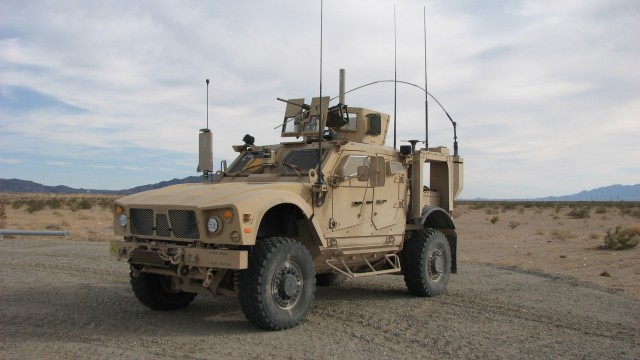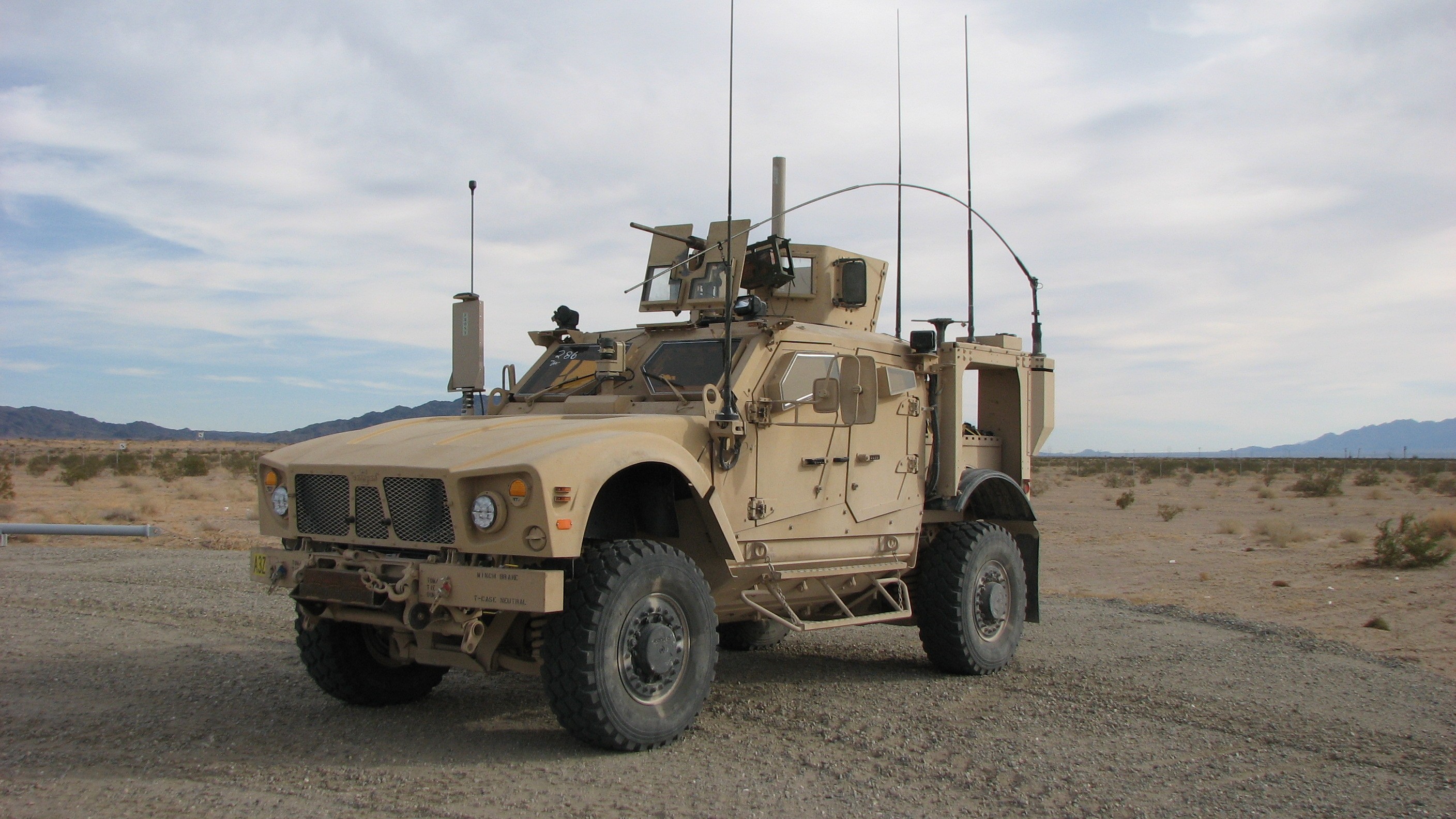The U.S. Army has outfitted a handful of Mine Resistant Ambush Protected, more commonly referred to as MRAP, vehicles with Network Integration Kits designed to give the bomb-defeating vehicles the ability to share real-time information such as sensor data from robots and UAVs while on-the-move in combat, service officials said.
While NIK technology can be outfitted on most Army vehicles, MRAPs were chosen because of their high demand in Afghanistan, said Maj. Gen. Keith Walker, director of the Future Force Integration Directorate, Fort Bliss, Texas.
To date, five M-ATVs, and six MRAPs have been outfitted with NIKs, Army officials said; The MRAPs with NIKs will deploy to Afghanistan with the first unit equipped with Increment 1 technologies which includes the battlefield network, Unattended Ground Sensors, Class 1 UAS, and the Small Unmanned Ground Vehicle (SUGV).
The NIKs, now being built onto MRAPs and M-ATVs at Fort Bliss, Texas, are engineered with technology that can receive and distribute data, voice, video and images across the force using multiple high bandwidth waveforms; they consist of software-programmable Joint Tactical Radio Systems (JTRS) such as the Ground Mobile Radios (GMR), a"dual-enclave" Integrated Computer System (ICS) built to handle classified and unclassified information, and a Blue Force Tracking display screen. The software and operating systems are connected through use of a middle ware called System of Systems Common Operating Environment (SOSCOE).
By providing "networked" combat-relevant information such as sensor feeds from a UAV across the force in real time, the NIKs may help MRAPs overcome some of their mobility restrictions and provide increased awareness for Soldiers traveling in the vehicles.
"MRAPs are massive there are some places they can't go. If you want to do recon in some areas you have to dismount Soldiers and that involves a risk. However, if I can send a Class I UAS or SUGV [Small Unmanned Ground Vehicle], I can keep Soldiers inside the vehicle," said Jerry Tyree, director of White Sands Missile Range Operations for Program Executive Office Integration.
The networked MRAPs and M-ATVs will particpate in a large scale test later this year.


Social Sharing